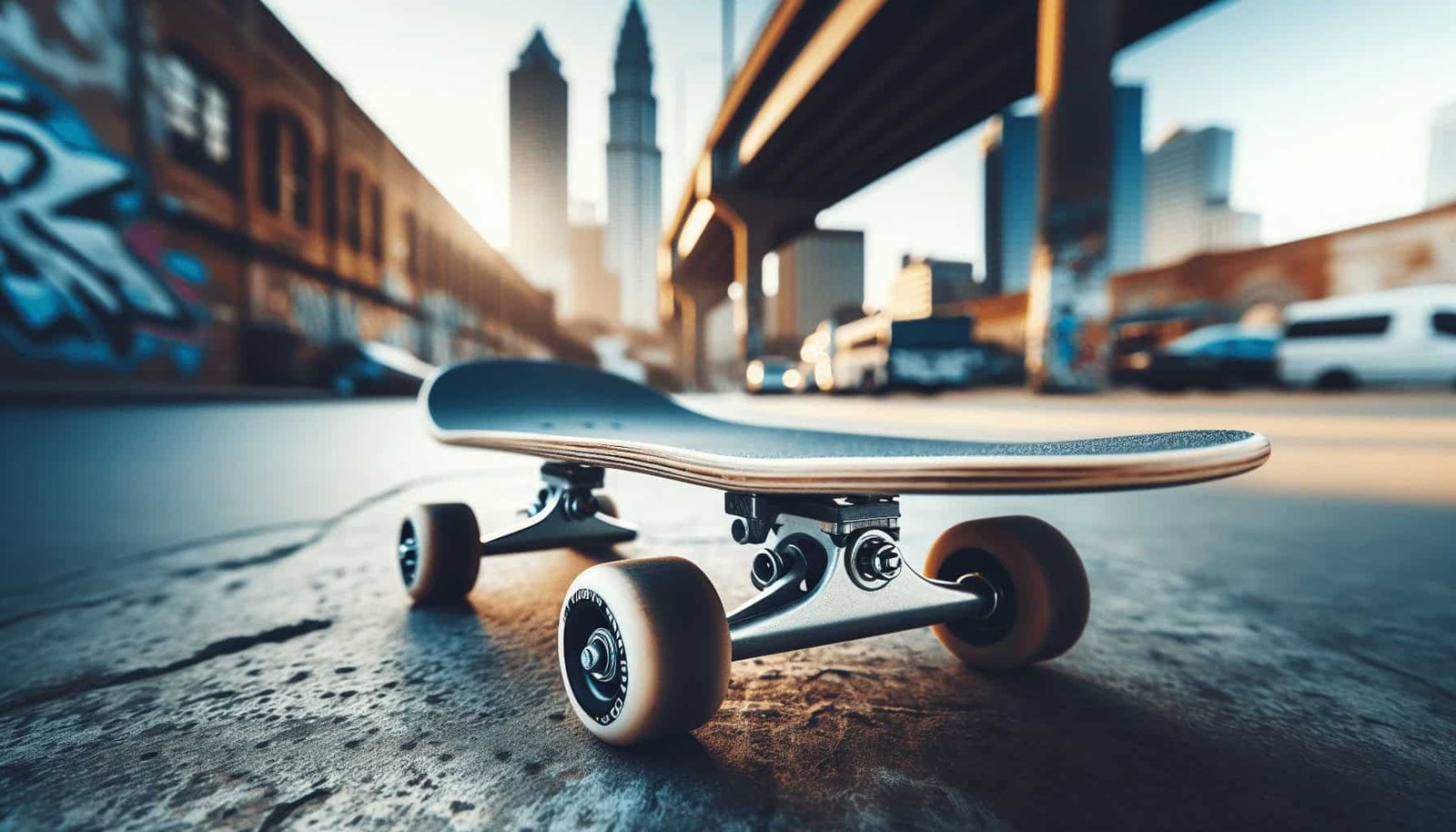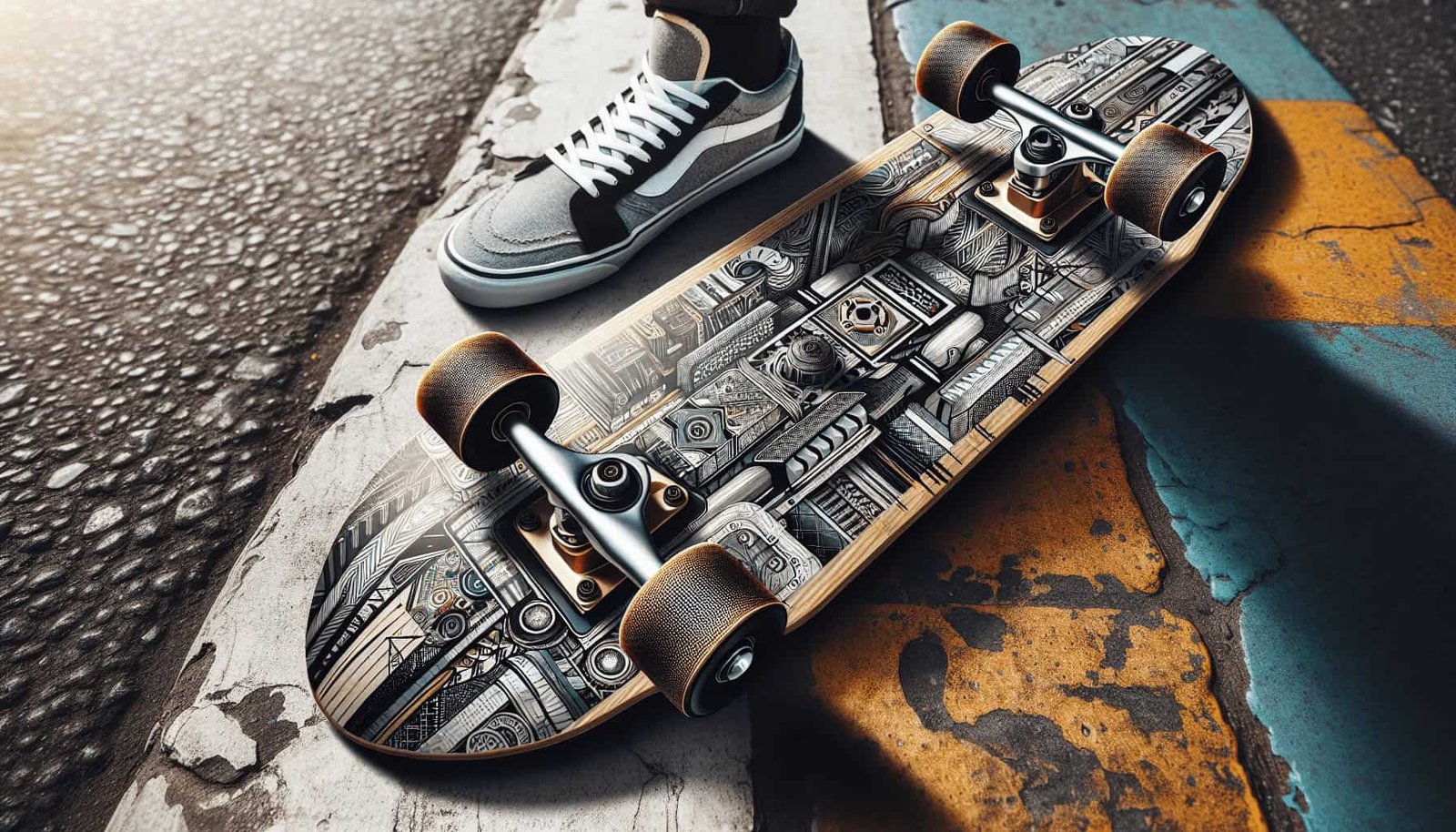Have you ever found yourself staring at a wall of skateboards, unsure about which one is best for street skating? You’re not alone. Choosing the perfect skateboard for street skating can feel overwhelming, especially with so many options available. But don’t worry; with a bit of guidance, you can make an informed choice that’ll enhance your skateboarding experience.
Understanding the Basics
Before we dive into specifics, it’s crucial to understand the basic components of a skateboard. A standard skateboard consists of several parts, each playing a unique role in your skating performance.
Deck
The deck is the flat board you stand on. It’s typically made of layers of maple wood and varies in size and shape. For street skating, the deck’s width and concave (the curve of the board) are especially important.
Trucks
Trucks are the T-shaped metal pieces that attach wheels to the deck. They play an essential role in how your skateboard turns and grinds. The width of your trucks should generally match the width of your deck.
Wheels
Wheels are another critical aspect. They come in various sizes and hardness levels, which can greatly affect how you perform tricks and ride on different surfaces.
Bearings
Bearings fit inside the wheels and allow them to spin. They are rated by the ABEC scale, which measures the precision of the bearing manufacturing. However, a higher ABEC rating doesn’t always mean faster or better for street skating.
Grip Tape
Grip tape is the sandpaper-like material on top of the deck that provides traction. It helps you maintain control, especially when performing tricks.
Choosing the Right Deck
Your choice of deck will be one of the first and most important decisions you’ll make. The deck influences how you balance and perform tricks.
Deck Width
For street skating, the deck width typically ranges from 7.5 inches to 8.5 inches. Your personal preference and shoe size play crucial roles in selecting the right width.
- 7.5 to 7.75 inches: Best suited for technical tricks due to the lighter weight. Ideal for skaters with smaller feet.
- 7.75 to 8.25 inches: A versatile choice that balances stability and maneuverability. Suitable for most skaters.
- 8.25 inches and up: Offers more stability for landing tricks but is heavier. Suitable for skaters with larger feet or those who prefer cruising.
| Deck Width | Best For | Suitability |
|---|---|---|
| 7.5 – 7.75 inch | Lighter, technical tricks | Smaller feet |
| 7.75 – 8.25 inch | Balance between stability and maneuverability | Most skaters |
| 8.25 inch + | Stability for landing tricks | Larger feet, cruising preference |
Deck Shape and Concave
The shape and concave of your skateboard can affect your comfort and performance. A deeper concave offers better grip and control, which is beneficial for flips and other tricks. Conversely, a flatter deck may provide a more stable platform for beginners.
- Medium Concave: Offers a good balance between control and comfort. Suitable for beginners and advanced skaters alike.
- Deep Concave: Provides more grip and control, great for technical tricks.
- Shallow Concave: Offers a stable surface, making it easier to ride for beginners.

Selecting the Right Trucks
Trucks are vital as they affect your skateboard’s turning radius and stability. They come in various heights and widths, and choosing the correct ones can greatly enhance your street skating experience.
Truck Width
Your truck width should generally match the width of your deck. If the trucks are too narrow or too wide, you’ll face issues with balance and control.
| Deck Width | Truck Width (Axle) |
|---|---|
| 7.5 – 7.75 inch | 7.5 – 7.75 inch (190.5 – 196.8 mm) |
| 7.75 – 8.25 inch | 7.75 – 8.25 inch (196.8 – 209.6 mm) |
| 8.25 inch + | 8.25 inch and above (209.6 mm and above) |
Truck Height
Truck height determines the distance between the wheels and the deck. The height you choose can affect the way you skate.
- Low Trucks: Offer better stability for flip tricks but can cause wheel bite. Suitable for smaller wheels (50-53mm).
- Mid Trucks: A versatile option that performs well for all-around skating. Suitable for wheels ranging from 53-56mm.
- High Trucks: Provide more clearance, reducing wheel bite. Suitable for larger wheels (56mm and above).
Truck Hardness
Bushings inside the trucks come in different hardness levels, affecting your turning ability. Softer bushings allow easier turning, while harder ones provide more stability.
Choosing the Right Wheels
Your skateboard’s wheels will have a significant impact on how you skate, affecting speed, grip, and the ability to perform tricks.
Wheel Size
Wheel size is measured in millimeters and plays a crucial role in your skating style. Street skaters usually prefer smaller wheels as they are lighter and easier to maneuver for technical tricks.
| Wheel Size | Best For |
|---|---|
| 50-53 mm | Technical street skating, lighter tricks |
| 53-56 mm | All-around street skating |
| 56 mm and above | Vert ramps, cruising, or rough surfaces |
Wheel Hardness (Durometer)
The hardness of your wheels, measured by the durometer scale, affects how they grip the surface. Most street skaters prefer harder wheels for less grip and increased speed on smooth surfaces.
- 78A – 87A: Soft wheels, great for rough surfaces and cruising.
- 88A – 95A: Medium soft, providing a balance between grip and speed, good for beginners.
- 96A – 99A: Optimal for street skating, offering good grip and speed.
- 100A and above: Hard wheels, ideal for smooth surfaces and technical tricks.
Wheel Shape and Contact Patch
Consider the shape and contact patch of the wheels as well. Narrow wheels with a smaller contact patch are lighter and better for technical tricks, while wider wheels provide more stability and grip.

Understanding Bearings
Bearings might seem like a minor component, but they play a crucial role in how smoothly your wheels spin. Understanding the basic aspects of bearings can help you make an informed decision.
ABEC Rating
Bearings are rated by the ABEC scale, which measures their precision tolerance. However, for street skating, the ABEC rating is less critical than you might think. Most street skaters prefer ABEC 5 or ABEC 7 as they offer a good balance of speed and durability.
Bearing Material
Most bearings are made of steel, but you can also find ceramic bearings. While ceramic bearings are smoother and require less maintenance, they are more expensive and less common in street skating setups.
Bearing Spacers and Shields
Spacers and shields can help protect your bearings and ensure they spin smoothly. Shields keep dirt and debris out, while spacers maintain the correct distance between bearings, preventing damage.
Grip Tape Essentials
Grip tape ensures you stay on your board and maintain control while performing tricks. Here’s what you should consider when choosing grip tape:
Grip Tape Grit
Different grip tapes have varying levels of grit. Grippier tapes help keep your feet planted, which is essential for flips and tricks. However, they can also wear down your shoes faster.
Application
Applying grip tape might seem simple, but it’s worth doing right to avoid air bubbles and ensure a smooth ride. Start from one end and gradually smooth it out to the other, trimming the excess afterward.

Customizing Your Skateboard
When you’re more experienced, customizing your skateboard can make your setup even more tailored to your preferences.
Customize Your Deck
Some skaters like sanding down specific parts of the deck or adding stickers. You can also select custom art decks from various brands to match your style.
Adjusting Truck Tightness
Adjust the tightness of your trucks to better suit your riding style. Tighter trucks offer more stability but less agility, while looser trucks allow for better turning but can feel wobbly.
Choosing Bushings
Swapping out bushings for either softer or harder ones can make a world of difference in your ride. Softer bushings make turning easier, while harder bushings provide more stability for tricks.
Trial and Error
The chances are, the first skateboard you pick won’t be the one you stick with forever. Street skating is a learning process, and part of what makes it exciting is customizing and perfecting your setup to suit your evolving style.

Expert Recommendations
Consulting with experienced skaters or visiting a local skate shop for advice can be invaluable. Skate shop employees are usually seasoned skaters themselves and can provide personalized advice based on your needs and preferences.
Building Confidence through Practice
Remember that skateboarding, especially street skating, is all about practice and perseverance. Your skills and preferences will evolve over time, and your skateboard setup may change along with them. Experimenting with different components helps you understand what works best for you and enhances your overall skating experience.

In Summary
Choosing the right skateboard for street skating involves understanding the intricacies of different components and what works best for your style and skill level. From selecting the right deck width and concave to ensuring your trucks and wheels are suitable for street use, each decision contributes to your overall experience. Don’t rush the process. Take your time to research, understand, and experiment with different setups. With the right skateboard, you’ll be well on your way to mastering the streets.
If you have any questions or need further advice, feel free to reach out to your local skate community or experts. Remember, the right skateboard is the one that feels right to you. Happy skating!
